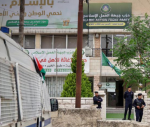You are here
Tehran and Washington at a crossroads: Can a new nuclear deal bridge deep divides
Apr 23,2025 - Last updated at Apr 23,2025
On Saturday, Iranian and US envoys are set to engage in a third round of indirect negotiations on limiting Tehran’s nuclear programme in exchange for lifting sanctions. Both sides characterised the April 19th second round as "constructive." Ahead of the coming round, experts met to discuss technical issues to prepare for accelerated progress. Iranian Foreign Minister Abbas Araghchi said they could begin designing a framework for a new nuclear deal, to replace the 2015 six-party agreement from which Donald Trump withdrew the US in May 2018 and slapped 1,500 punitive sanctions on Iran.
Under that deal, Iran had to limit uranium enrichment to 3.67 purity for civil uses, its stockpile to 300 kilograms, and its centrifuges to old models, and submit to constant monitoring and inspections by the International Atomic Energy Agency (IAEA).
Iran waited for a year after Trump abandoned the deal before responding. Iran increased enrichment to 20 per cent and then to the 60 per cent level which approaches 90 per cent needed for weapons and increased its overall stockpile to 8,294 kilos. Iran installed high tech centrifuges and curbed IAEA monitoring and inspections. Iran has also doubled the number of its uranium mines from seven t0 14, making it clear that it is preparing for independent long-haul enrichment.
Both sides have "red lines." Iran argues it is not prepared to abandon uranium enrichment. The US contends Iran must not build nuclear bombs. Therefore, a new deal will have to rely on compromises, notably by Iran which now has an advanced programme. IAEA head Rafael Grossi told the French daily Le Monde, "It's like a jigsaw puzzle. They have the pieces, and one day they can put them together. There is a way to go to achieve this, but they are not far from it. We have to accept that. In the last four years, we have seen a remarkable acceleration." The IAEA estimates Iran has enough 60 per cent enriched uranium to upgrade to 90 per cent and build at least six nuclear bombs.
However, Iran has consistently rejected weaponisation. Writing in The National Interest in December 2012 ex-Iranian diplomat and nuclear negotiator Hossein Musavian explained why Iran does not want the Bomb. First, for religious reasons, supreme leader Ayatollah Ali Khamenei has ruled "Haram" nuclear bombs along with all weapons of mass destruction. Second, possession of nuclear weapons might give Iran a short-term advantage which, Musavian said, "would turn into longer-term vulnerability.” Third, bombs "would trigger a regional arms race," involving Egypt, Turkey and Saudi Arabia. And, fourth, since Iran wants to modernise, it needs to access "technological cooperation with developed countries."
Reconciliation is difficult if not impossible. Iranians blame the US for the 1953 ouster of democratic reformist Prime Minister Mohammed Mossadegh after he nationalised the Anglo-Persian oil company. Washington's ally Shah Mohammed Reza Pahlavi returned to power until his overthrow in early 1979 by Ayatollah Ruhollah Khomeini. US resentment reached a high pitch and has remained a major factor in relations after Iranian demonstrators seized the US embassy in Tehran in November of that year and held 50 staff members for 444 days. This deeply humiliated the US.
Iran does not trust Trump whose first 100 days back in the White House have been chaotic and confusing. Trump has revived his “maximum pressure” sanctions campaign against Tehran, but in March, he sent a letter to Iran's Supreme Leader Ali Khamenei calling for renewed negotiations or risk US military action. Trump said, “I’m not in a rush” to use force...I think Iran wants to talk.”
Indeed it does but Tehran expects consistency in the US approach. While the first round on April 12 between Araghchi and US envoy Steve Witkoff was deemed "constructive," ahead of the second round Witkoff adopted the line of Trump administration hardliners. Having said that Iran could continue "enrichment at 3.67 per cent for civil purposes," he posted on social media on the 15th that "Iran must stop and eliminate its nuclear enrichment and weaponisation programme." If he did not drop this notion during the second round, there would have been no third.
During mid-April Witkoff also called for "verification" of Iran's ballistic missiles, another demand dismissed by ran which is building a coastal missile base with the aim of entering the space race.
Araghchi is a senior figure in Tehran, an experienced negotiator who speaks excellent English and was involved in negotiations which led up to the 2015 deal during the Obama administration. By contrast, Trump's pal of 40 years, Witkoff is a billionaire property developer who plays golf with Trump. Nevertheless, Witkoff has been deployed to make peace between Russia and Ukraine and Hamas and Israel as well as tackle Iran's nuclear programme. So far Witkoff has failed to secure ceasefires in Russia's Ukraine war and Israel's Gaza war. No diplomat, Witkoff attracted ridicule when attending Ukraine security talks in Paris he compared the 303-year old Elysee Palace which houses the French president to Trump's Mar-a-Largo resort and residence.
Trump has so far managed to restrain Israeli Prime Minister Benjamin Netanyahu from bombing Iran ahead of the negotiations, but Trump has failed to convince him to stop bombing Gaza. Netanyahu has long considered Iran to be Israel's inveterate enemy and has repeatedly expressed his determination to take out Iran's nuclear programme. He has attacked several nuclear facilities and Israel has been blamed for the assassinations of five Iranian nuclear scientists between 2010-2020.












Add new comment